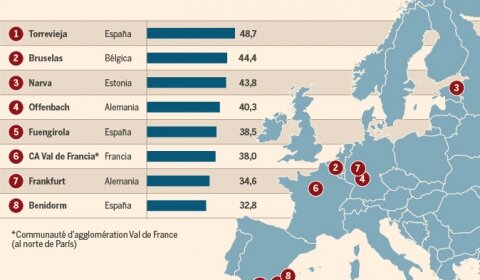
As many of you will already know because you have visited them, Spain has a multitude of areas of natural beauty spread out across its diverse landscape. Some of these beautiful spots are made up of the different lakes that are found dotted about the country from north to south and east to west.
Below is a small description of some of the ones most worth visiting, which have been noted for their scenic and ecological characteristics.
Lago de Sanabria (Zamora)
The Sanabria Lake in Zamora is one of the biggest in Spain, and in Europe. It measures 1.5km wide by 3km long and has a depth of around 50m. Because of its size many different types of water activities are carried out on the lake, and in summer the area is filled with hundreds of people enjoying themselves by and on the water.
Lagos de Covadonga (Asturias)
The Lagos de Covadonga are three glacial lakes located at an altitude of more than 1,000m within the Picos de Europa National Park. The lakes Enol, La Ercina and El Bricial are only filled with water during the warmer months of the year, when the ice and snow from the mountains have melted. This area is one of the most visited spaces of natural beauty in Spain, particularly during the summer, with people coming from all over Europe to visit.
Lago de Sant Maurici (Lleida)
This stunning lake is situated in the Pyrenees, on the Catalan side, concretely in the municipality of Espot in Lleida at an altitude of 1,910m. The lake forms part of the Aigüestortes Natural Park, which is the only one in the region of Cataluña. The Maurici lake measures 1,100m in length by 200m wide.
Ibones de Anayet (Huesca)
The Ibones de Anayet are a group of small lakes situated at an altitude of 2,233m high up in the Pyrennes and at the foot of the Anayet mountain. They are located in municipality of Sallent de Gállego.
La Laguna Negra (Soria)
The Laguna Negra de Urbión is located within the mountain range of the same name. It sits at an altitude of 1,753m and is a glacial lagoon. Legend has it that the Black Lagoon has no bottom and that it communicates with the sea through its many caves and underground streams. It is also said that some kind of being lives right at the bottom and devours everything that falls into it.
Laguna de Fuente de Piedra (Málaga)
This lake, which is situated in Antequara in Málaga, is the biggest in the region of Andalucía and one of the most extensive in Spain. It measures a total of 1,364 hectares, is 6km long and 2km wide. It is a salt-water lake that attracts thousands of migratory birds every year to its shore, and it has the largest colony of flamingos in the whole of the peninsula.
Laguna de Torrevieja (Alicante)
The Lagoon of Torrevieja forms part of the Natural Park of the Lagoons of La Mata and Torrevieja, which is situated in the Vega Baja area of the Alicante province. A haven for many different species of migratory birds, including flamingos, this lagoon is highlighted because of its peculiar pink colour, which are particularly striking during the summer. There are a number of reasons why the water looks pink; due to the species of algae and bacteria that are present and grow in the lake and the layer of clay that is found on the bottom.
Lagunas de Ruidera (Ciudad Real and Albacete)
There are 15 lakes that make up the group of the Ruidera lakes which are spread out along 15km of the Alto Guadiana Valley on the border of the provinces of Ciudad Real and Albacete. They also form part of the Lagunas de Ruidera Natural Park, which is home to a great number of different species of animals and plants. Visitors are particularly attracted to the waterfalls that are found on some of the lakes.
Source: www.diarioinformacion.com
Categories:









